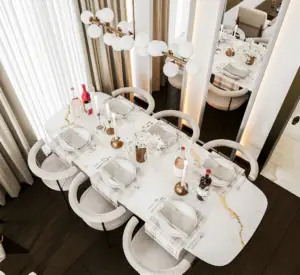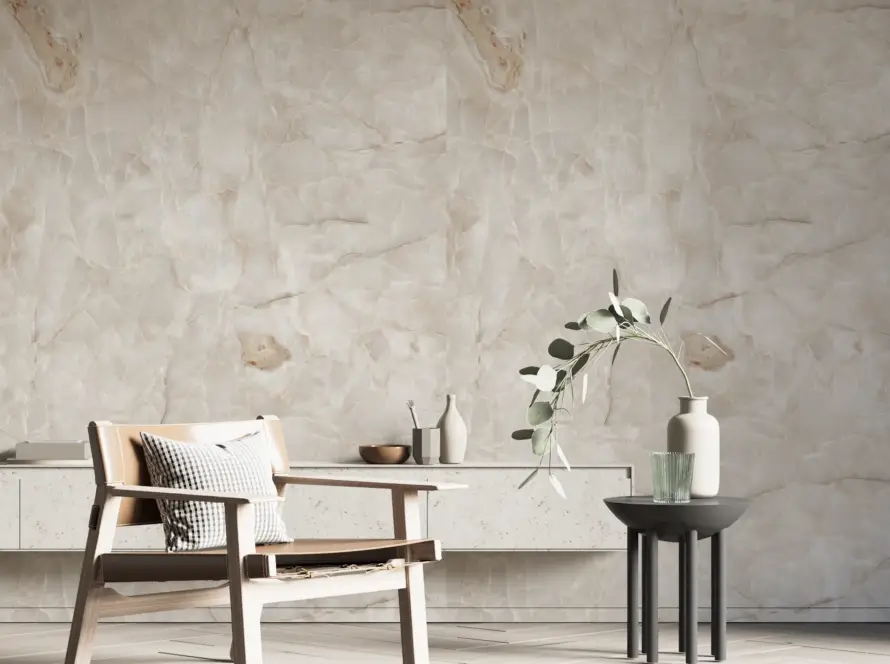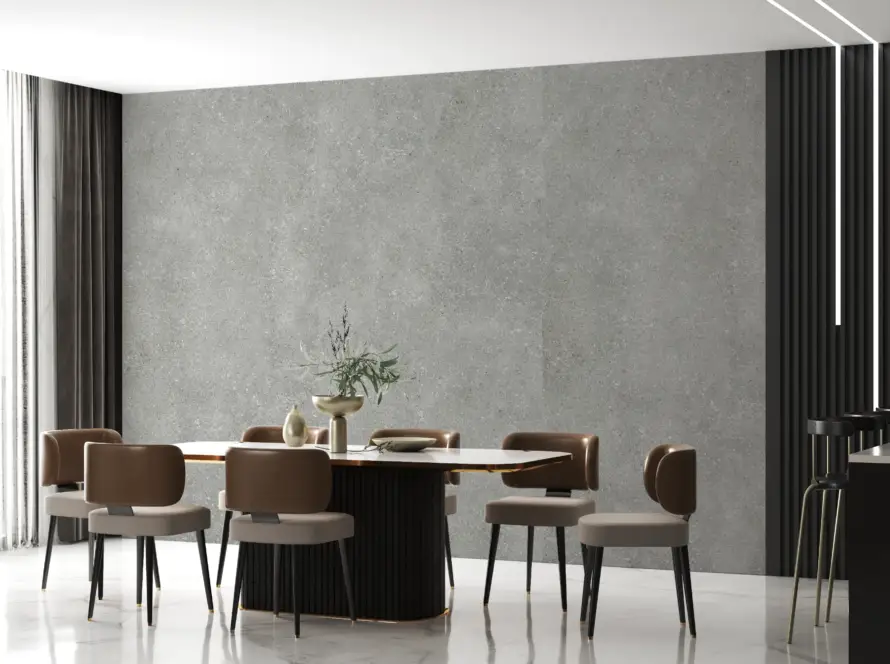When it comes to interior design and construction, the choice of surface material significantly impacts both the aesthetics and functionality of a space. Among the most popular options—porcelain, marble, and quartz—there’s often confusion. Many assume these materials are interchangeable, but in reality, they offer very different benefits and require different types of care.
In this blog post, we’ll debunk 7 common misconceptions that can lead to poor design decisions and help you choose the right surface for your project.
Myth 1: “Porcelain is just for plates and dishes”
Many people associate porcelain with delicate tableware and tea sets. However, this is a very limited view. Today’s porcelain slabs and tiles are high-performance materials used widely in flooring, wall cladding, and even furniture design. Thanks to their durability, stain resistance, and wide range of styles, porcelain surfaces are ideal for high-traffic areas and outdoor applications. They’re not just beautiful—they’re incredibly practical too.
Myth 2: “Marble is the most durable material”
Marble is undoubtedly one of the most elegant natural stones. Each slab is unique with its own veining and patterns. However, when it comes to durability, marble is not always the best option. It’s a porous stone, which makes it sensitive to acids, prone to staining, and vulnerable to scratching. Especially in high-use areas like kitchens, it requires regular maintenance and sealing to preserve its beauty. With proper care, marble can last for decades—but it does demand attention.
Myth 3: “Quartz is 100% natural”
Quartz countertops are often marketed as natural, but the reality is that they are engineered surfaces. They consist of around 90–95% natural quartz crystals, combined with resins and pigments to create a durable, non-porous surface. This manufacturing process gives quartz surfaces their uniform appearance, antibacterial properties, and color consistency. While it’s derived from natural stone, quartz is not the same as granite or marble, and it shouldn’t be considered a purely natural material.
You only understand the true value of stone when it becomes part of the surface.
Myth 4: “Porcelain surfaces are fragile and break easily”
People often assume porcelain is fragile because of its association with fine china. But porcelain slabs used in architecture are incredibly strong and long-lasting. Fired at extremely high temperatures, they’re resistant to water, frost, UV rays, and scratches. This makes them ideal for facades, terraces, poolsides, and commercial areas. When installed properly, porcelain surfaces can withstand even the harshest conditions for years to come.
Myth 5: “Marble doesn’t stain”
Despite its luxurious appearance, marble is highly porous. It absorbs liquids quickly, especially oily or acidic substances like lemon juice, vinegar, or wine, which can leave permanent stains. However, with the right sealants and maintenance routines, marble can remain spotless and elegant. The key is prevention: wipe spills immediately and reapply sealant regularly.

Myth 6: “Quartz is heat-resistant—hot pans are no problem”
Quartz countertops are known for their toughness, but that doesn’t mean they’re heat-proof. In fact, the resins used in quartz production can be damaged by high heat. Placing a hot pot directly from the stove onto a quartz surface can cause discoloration or even cracking. Always use a trivet or heat pad to protect the surface.
Myth 7: “They all look the same—there’s no aesthetic difference”
Visually, each material offers a different design experience. Marble delivers a natural, classic beauty with unique veining that varies from slab to slab. Quartz offers a more uniform, clean, and modern look, often favored in minimalist designs. Porcelain is the most versatile—it can mimic the appearance of marble, concrete, wood, or metal, making it a favorite for both contemporary and traditional interiors. The right choice depends on your desired aesthetic and application area.


